omeka
Item set
- Title
- omeka
- Description
- All items
Items
-
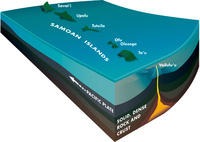 Tectonic Magmatic Setting Similar to the Hawaiian-Emperor seamount chain, the Samoan Islands are believed to be the result of hotspot activity underlying the Pacific Ocean. The Samoan hotspot system includes the extant Samoan Islands, Uvea, and Niulakita, as well as the submerged Pasco Banks, a ridge-like seamount. However, unlike the Hawaiian chain, the volcanically active on both extreme ends, although the easternmost edifice is not an active seamount. This may be the result of deformation of the margin due to lithospheric dilation as the plate bends where it approaches the Tonga Trench subduction zone. In addition, the chain consists of alkali rather than tholeiitic lavas. In accordance with the hotspot model, the Samoan hotspot remains stationary as the overriding pacific plate moves east to west. A build-up of thermal activity over the magma plume generated at the hotspot results in magma breaching the crust and the formation of island chains, with island age increasing away from the hotspot. Hotspot plumes are generated from the thermal boundary layer at the core-mantle boundary some 2880 km below the surface, carrying heat from the core. When heat from the core can create a body of melt large enough such that its buoyancy exceeds the overlying pressure of the surrounding rock, these plumes rise up to form diapirs within the crust, fueled by a plume tail. Fig 1. Diagram showing plate motion and mantle plume underlying the Samoan Islands Landforms Hotspot activity underlying oceanic lithosphere creates chains of islands which grow as the plume passes underneath the overriding plate. These islands start as seamounts at the bottom of the ocean and grow to breach the surface as more material is added. The largest islands are usually the youngest, nearest to the source of new mantle material, while the older islands further along the chain will show signs of erosion and collapse as they are not supported by the influx of new magma. This continues until they are eroded back into the ocean to again become a seamount. The Samoan islands are shield shaped with low angle dome like flanks. Shield volcanoes will often erupt along fissure vents along its flanks. The basaltic composition of the melts sourced by hotspot activity creates flows which are least viscous of the magmas. This leads to melts moving long distances laterally creating a distinctive shape. Fig 2. Savai’i volcano showing distinctive shield shape in center Magma Generating Process Under normal conditions the geothermal gradient of the earth does not provide the proper temperature and pressure to induce melting of the mantle. In order to generate a melt one must find a way to increase the geothermal gradient so that it intersect with the liquidus, by either decreasing the pressure or increasing the temperature. Because mantle plumes have a hat source from the deep mantle, they have a higher thermal budget than the normal geotherm. This provides conditions which allow partial melting to occur. In addition, as more melt is pushed through the hotspot there is some decompression melting as some of the pressure on the system is lifted. Fig 3. Generalized view of hotspot generation by rising mantle plume Geochemistry Plumes are generated near the core mantle boundary leading their composition to be more fertile, compared to other mantle source rocks. This means that the source rock has been altered very little, and as a result have a higher level of incompatible elements than melts from mid ocean ridges. Harker diagrams of show changing weight percentages of chemical constituents with changing Si. Primitive melts have lower Si content while more evolved ones have higher Si content. Thus an maturation of the melt can be read from left to right following increasing Si. MgO, FeO, P2O5, CaO, and TiO2 decrease with increasing Si content. This means that these elements are more compatible than Al2O3 and the alkalis, which show a trend in the opposite direction with increasing Si. Al203, Na2O, and K2O are more incompatible. Trend follows what we would expect to see. FeO/MgO vs SiO2 plot shows rocks were produced primarily by calc-alkaline melts. This is very unusual for a Hawaiian style hotspot sourced volcanism. One would expect to see more tholeiitic compositions. The alkali vs. silica diagram, shown as Na2O+K2O vs SiO2, has a fairly even spread favoring the sub-alkaline series a bit more. The Aluminum Saturation graph shows a range of saturations with metaluminous levels slightly favored. The AFM Ternary diagram shows an evolution of the melt towards iron. This means that the melt is more diverse and evolving and decreasing in Mg. This melt is changing from a primary melt to a more evolved melt.
Tectonic Magmatic Setting Similar to the Hawaiian-Emperor seamount chain, the Samoan Islands are believed to be the result of hotspot activity underlying the Pacific Ocean. The Samoan hotspot system includes the extant Samoan Islands, Uvea, and Niulakita, as well as the submerged Pasco Banks, a ridge-like seamount. However, unlike the Hawaiian chain, the volcanically active on both extreme ends, although the easternmost edifice is not an active seamount. This may be the result of deformation of the margin due to lithospheric dilation as the plate bends where it approaches the Tonga Trench subduction zone. In addition, the chain consists of alkali rather than tholeiitic lavas. In accordance with the hotspot model, the Samoan hotspot remains stationary as the overriding pacific plate moves east to west. A build-up of thermal activity over the magma plume generated at the hotspot results in magma breaching the crust and the formation of island chains, with island age increasing away from the hotspot. Hotspot plumes are generated from the thermal boundary layer at the core-mantle boundary some 2880 km below the surface, carrying heat from the core. When heat from the core can create a body of melt large enough such that its buoyancy exceeds the overlying pressure of the surrounding rock, these plumes rise up to form diapirs within the crust, fueled by a plume tail. Fig 1. Diagram showing plate motion and mantle plume underlying the Samoan Islands Landforms Hotspot activity underlying oceanic lithosphere creates chains of islands which grow as the plume passes underneath the overriding plate. These islands start as seamounts at the bottom of the ocean and grow to breach the surface as more material is added. The largest islands are usually the youngest, nearest to the source of new mantle material, while the older islands further along the chain will show signs of erosion and collapse as they are not supported by the influx of new magma. This continues until they are eroded back into the ocean to again become a seamount. The Samoan islands are shield shaped with low angle dome like flanks. Shield volcanoes will often erupt along fissure vents along its flanks. The basaltic composition of the melts sourced by hotspot activity creates flows which are least viscous of the magmas. This leads to melts moving long distances laterally creating a distinctive shape. Fig 2. Savai’i volcano showing distinctive shield shape in center Magma Generating Process Under normal conditions the geothermal gradient of the earth does not provide the proper temperature and pressure to induce melting of the mantle. In order to generate a melt one must find a way to increase the geothermal gradient so that it intersect with the liquidus, by either decreasing the pressure or increasing the temperature. Because mantle plumes have a hat source from the deep mantle, they have a higher thermal budget than the normal geotherm. This provides conditions which allow partial melting to occur. In addition, as more melt is pushed through the hotspot there is some decompression melting as some of the pressure on the system is lifted. Fig 3. Generalized view of hotspot generation by rising mantle plume Geochemistry Plumes are generated near the core mantle boundary leading their composition to be more fertile, compared to other mantle source rocks. This means that the source rock has been altered very little, and as a result have a higher level of incompatible elements than melts from mid ocean ridges. Harker diagrams of show changing weight percentages of chemical constituents with changing Si. Primitive melts have lower Si content while more evolved ones have higher Si content. Thus an maturation of the melt can be read from left to right following increasing Si. MgO, FeO, P2O5, CaO, and TiO2 decrease with increasing Si content. This means that these elements are more compatible than Al2O3 and the alkalis, which show a trend in the opposite direction with increasing Si. Al203, Na2O, and K2O are more incompatible. Trend follows what we would expect to see. FeO/MgO vs SiO2 plot shows rocks were produced primarily by calc-alkaline melts. This is very unusual for a Hawaiian style hotspot sourced volcanism. One would expect to see more tholeiitic compositions. The alkali vs. silica diagram, shown as Na2O+K2O vs SiO2, has a fairly even spread favoring the sub-alkaline series a bit more. The Aluminum Saturation graph shows a range of saturations with metaluminous levels slightly favored. The AFM Ternary diagram shows an evolution of the melt towards iron. This means that the melt is more diverse and evolving and decreasing in Mg. This melt is changing from a primary melt to a more evolved melt. -
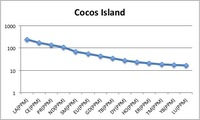 The REE diagram for the Cocos Island displays a intra-plate oceanic margin system. The slow and gradual negative slope of the elements compared to a continental margin shows the general similarities between oceanic and mantle compositions. There is a visible difference between the rock found at the Cocos Island and a natural chondurite rock from the mantle.
The REE diagram for the Cocos Island displays a intra-plate oceanic margin system. The slow and gradual negative slope of the elements compared to a continental margin shows the general similarities between oceanic and mantle compositions. There is a visible difference between the rock found at the Cocos Island and a natural chondurite rock from the mantle. -
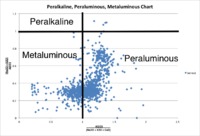 Geochemical Plots for the Azores Islands. Includes REE plot, ternary diagram, and multiple Harker diagrams. Some files contain more detailed interpretations and explanations for the data. In general the harper diagrams reveal that K, Na, and Al remain as a liquid until later stages of the melts crystallization, as indicative by increasing weight percentages occurring coeval to increasing weight percentages of the control SiO2 group. In contrast, Fe, Ca, Ti, and P2O5 decrease in weight percentage as the melt progresses, as expected for elements with higher electronegativity and smaller atomic radii.
Geochemical Plots for the Azores Islands. Includes REE plot, ternary diagram, and multiple Harker diagrams. Some files contain more detailed interpretations and explanations for the data. In general the harper diagrams reveal that K, Na, and Al remain as a liquid until later stages of the melts crystallization, as indicative by increasing weight percentages occurring coeval to increasing weight percentages of the control SiO2 group. In contrast, Fe, Ca, Ti, and P2O5 decrease in weight percentage as the melt progresses, as expected for elements with higher electronegativity and smaller atomic radii. -

-

-

-

-

-
 The majority of the major elemental components show very similar trends. The highly compatible elements, MgO and FeO follow the same downward trend in both New Zealand and the Aleutian arc. The incompaitble K2O shows the same upward trend in both systems. The one major element that shows deviation is Na2O, which becomes a compatible element in the more evolved melts in the New Zealand system, but never becomes compatible in the Aleutian Arc system. Both systems have sub-alkaline compositions, which is characteristic of convergent margins. They are also heavily calc-alkaline, but New Zealand has some samples that are considered tholeiitic. The ternary diagrams show that both systems have a very evolved melt system, leaning towards the Alkali saturation. They also share the same REE trends, having more of the incompatible elements, and fewer compatible elements.
The majority of the major elemental components show very similar trends. The highly compatible elements, MgO and FeO follow the same downward trend in both New Zealand and the Aleutian arc. The incompaitble K2O shows the same upward trend in both systems. The one major element that shows deviation is Na2O, which becomes a compatible element in the more evolved melts in the New Zealand system, but never becomes compatible in the Aleutian Arc system. Both systems have sub-alkaline compositions, which is characteristic of convergent margins. They are also heavily calc-alkaline, but New Zealand has some samples that are considered tholeiitic. The ternary diagrams show that both systems have a very evolved melt system, leaning towards the Alkali saturation. They also share the same REE trends, having more of the incompatible elements, and fewer compatible elements. -

-

-
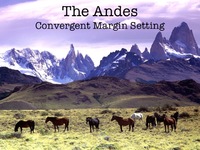
-
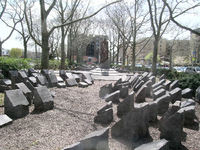
-

-
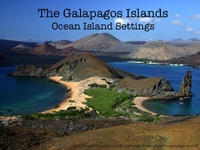
-

-
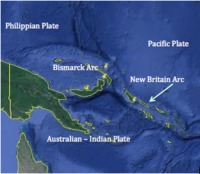 Tectonic Setting - These arcs are located where the Pacific Plate subducts under the Australian - Indian Plate in the southwest.
Tectonic Setting - These arcs are located where the Pacific Plate subducts under the Australian - Indian Plate in the southwest. -

-

-

-

-

-
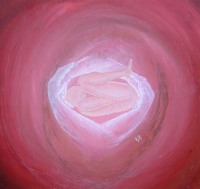
-

-

